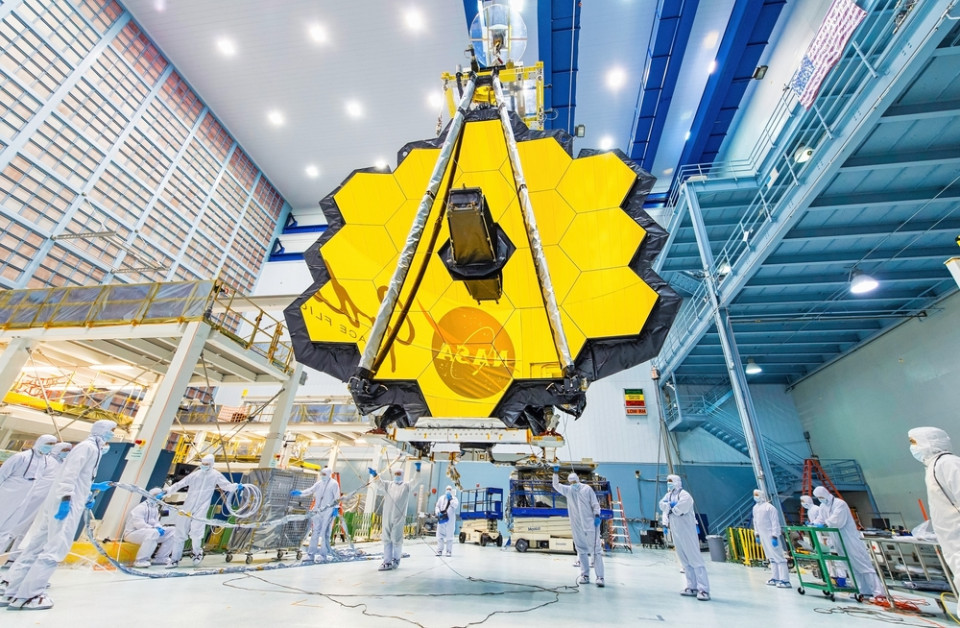
University of Bolton, Deane Road, Bolton. BL3 5AB
Tel:
Email:


“At the University of Bolton, we take great pride in providing a quality, supportive learning environment for our students.”
Professor George E Holmes DL | President & Vice Chancellor
“...tutors are very supportive and you’re not just a student ID number, at this university you are an individual with a name.”
Ellisse Vernon | BSc (Hons) Adult Nursing
Back to menu
Back to menu
Study with an Off-Campus Partner
Back to menu
Back to menu
University of Bolton, why we are the right choice
Location - Bolton, Greater Manchester

26/02/2024
STEM is short for science, technology, engineering and mathematics; four letters that represent some of the most exciting innovations in modern times. Today, we’ll dive into some of the incredible breakthroughs across these fields to get you even more hyped for a career in STEM. Just navigate right to the field you’re passionate about to see where your path might take you…

Human Genome Project (HGP)
Completed in 2003, the HGP generated the first sequenced human genome, improving how we understand and treat disease. It was a landmark global effort and covers over 90% of the human genome; enabling more effective biomedical research.
Gene-editing treatments
Cardio-vasular disease is one of the leading causes of death and you could be part of the fight against it. New gene-editing treatments are in trials to lower inherited high cholesterol rates by making a change to the patient’s base DNA within the liver. Success in this trial is sparking brand new conversations in the field of genetic medicine.
James Webb Space Telescope
With clearer resolution than ever before, we’re seeing more of our galaxy than we ever imagined possible. The James Webb Space Telescope creates beautiful, crystal-clear images of far-off phenomena and has already contributed to incredible discoveries like the tiniest, free-floating brown dwarf we’ve ever recorded.
Deep Mind and protein
In 2022, the AlphaFold2, RoseTTAFold and trRosettaX-Single algorithms were used by Deep Mind to predict the 3D folded structure of a protein molecule. A staggering advancement in AI prediction models, it brought the number of unknown protein structures to just 29 from 4,800!
Discovery of prehistoric rainforests
Also in 2022, researchers in Southeastern Australia found fossils from 11-16 million years ago that showcase rainforest ecosystems. These are some of the only known examples and they include fish with full bellies and spiders with their little leg hairs intact!
Reviving dead organs
In 2022, scientists at Yale brought a pig’s organs back to life after it had passed away. This new system, called OrganEx, is an amazing discovery that could keep organs viable for transplantation longer.
Ready to fuel your passion for science? Check out some follow-on reading here.

Generative AI
Generative AI is the hottest buzzword right now and one of the most significant tech breakthroughs in the last few decades. By training platforms like Chat GPT and Bard on cached versions of the internet, tech companies have created the infant form of what could become the world’s most important tool of the future. (Just don’t try to use them to write your papers, please.)
Robotics and Optimus Gen-2
With precision, the new Optimus Gen-2 handles delicate eggs, performs squats expertly and interacts fairly naturally with its human handlers. It is hailed as the future of robotics and joins already impressive offerings from Honda and Boston Dynamics. There are promising applications for these robots as home assistants and caregivers, as well. So, will you work on the first bi-pedal robots to ever enter our homes?
3D metal printing
You probably know about the filament plastic printers we’ve had around for a few decades. But new advancements in 3D printing mean we can now make parts in an inert gas environment using lasers and metal powders. It’s a layer-based printing system that adds a final encapsulation step to ensure rigidity and it could transform manufacturing globally.
EV’s
HeyCar reports the “electric vehicle (EV) market is booming, according to the latest vehicle stats. Electric car sales increased by 40% in 2022 and EVs enjoyed another record year with more than one in ten new vehicles being electric.” So, now is a great time to get into EV technology since there are many jobs available, supporting the UK in its commitment to transition to electric-powered vehicles by 2030.
Logical quantum processor
In 2023, a Harvard team created a logical, programmable quantum processor that can execute hundreds of logical gate operations and encode up to 48 logical qubits. It’s the first time we’ve seen a large-scale algorithm work on an error-corrected quantum computer and marks a huge step forward in this type of computing that could form the foundation of Web 4.0.
VR gaming
With the new MetaQuest 3, users are blending VR with AR in surprising ways. Watch YouTube videos while you do the washing up or fight an invasion of monsters in your bedroom. This generation of VR headsets breaks down boundaries, creating immersion within your environments and it’s a field that’s got some real traction for the future.
Want to be on the cutting edge of tech? Read more on this sector here.
Nuclear-enabled space exploration
Rolls-Royce unveiled their prototype reactor based on modular nuclear fission with just one goal - sustainable moon power. Their plan is to have an operational microreactor ready for lunar surface missions by 2030 and it’s the students of today that will craft these solutions for future moon missions.
UK space sector
In 2022, the UK Civil Aviation Authority granted launch operator and range control licences to Virgin Orbit ahead of the first planned orbital space launches from UK soil. If you want to get into space engineering, you no longer have to go to Houston, Texas or Titusville, Florida; opportunities are available as close to home as Cornwall.
In-brain engineering
Engineering isn’t just an external concept. Now, we’re getting into the deepest parts of the human body with wearables that are inside us. At the Neuralink Show and Tell in 2022, Elon Musk shared how these generalised I/O devices for the brain might help people overcome debilitating medical issues and improve their quality of life.
eVTOL aircraft
More than 350 companies in 48 countries are trying to make eVTOLs (electric vertical takeoff and landing vehicles) that could lead to real, flying cars. The BlackFly is a single-seat model that’s ultralight and bypasses a lot of the flight certification rules that the FAA and similar organisations have. It showcased at the Pacific Airshow in California and marks a real step forward in this personal aircraft type.
The Line
Situated in NEOM, Saudi’s future gigacity, The Line, a 75-mile, self-contained mirrored city concept is already underway. A hospital, port, utilities and roads have been completed so far. The 200-metre wide, 500-metre-tall structure will contain everything needed for true urban living, run on renewable energy and limit its impact on the local environment. Could you design the next gigacity structure?
The Sphere
True, immersive entertainment. Located in Las Vegas, Nevada; The Sphere is an engineering marvel, representing the future of multimedia experiences and delighting tourists the world over. The dome took 3,000 tonnes of steel and 6,000 cubic yards of concrete to create and then it was covered - inside and out - with LED screens for internal and external projections on the largest spherical building in the world.
While the London version has been shelved for now, there’s a lot more to explore in engineering. Read on.
Ramsey numbers
When thinking about socialisation, what is the smallest number of people you can invite to a party to get at least one group of three people who are total strangers or all know each other? This question is known as Ramsay's number and it's easy until you try to add more people. A recent breakthrough in mathematics saw us understand the upper bounds of Ramsey numbers better - it’s not 4k, but closer to 3.993k. A discovery that marks a massive leap of understanding for people who are passionate about numbers like you.
Spacing of prime numbers
In 2013, a recent graduate solved one of maths’s oldest problems - right out of grad school. It is related to number theory and the spacing of prime numbers (you can read about it here). Recently awarded a Fields Medal, this same scientist has been working on promising theories about how prime numbers are distributed on the number line.
E8 lattice
While amid the Ukraine war, a local female mathematician began working on a proof. It’s revolutionary and explains that “an arrangement called the E8 lattice is the densest packing of spheres in eight dimensions.” It’s just another huge step forward in how we understand this kind of grouping.
Phase transitions
Published last year, there’s a new theory of phase transitions. According to IOPScience, “the new theory applies to phase transitions in small N systems (that is, at nanoscopic and mesoscopic scales), and in the absence of symmetry-breaking. However, the preliminary version of the theory was incomplete and still falsifiable by counterexamples.” So, there are still opportunities to make inroads within this theory as a new grad in STEM.
Mathematical Physics
Another Ukrainian national, Svetlana Jitomirskaya won the inaugural Olga Alexandrovna Ladyzhenskaya Prize for her work around quasi-periodic operators. They relate to quantum physics and how electrons respond in certain environments. Her work intersects with physics and emerging materials that need to be studied in this way. As our use and understanding of materials expand, there will be even more career pathways opening across practical and theoretical mathematics alongside experts like Svetlana.
Keen to explore more in STEM? Click here.